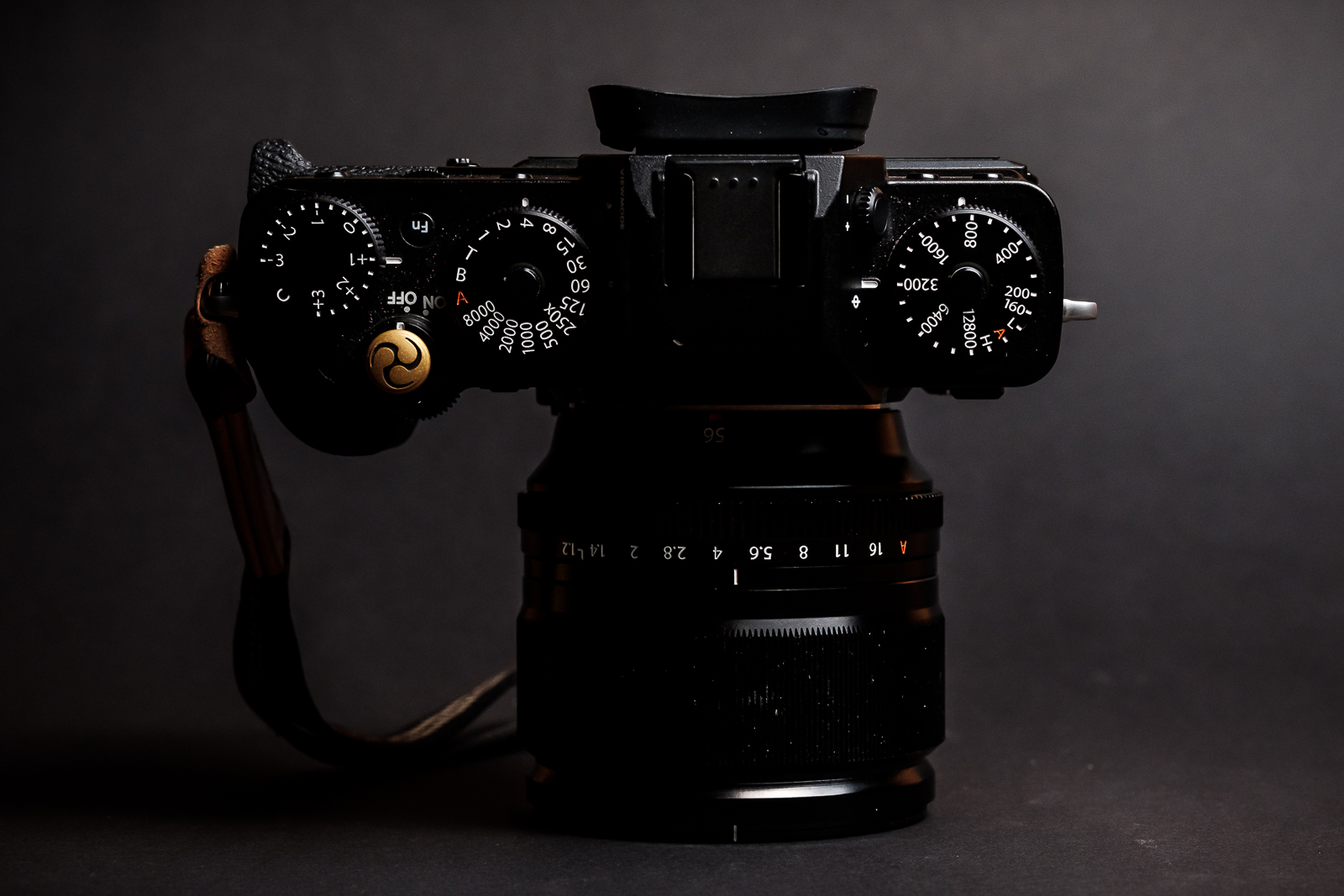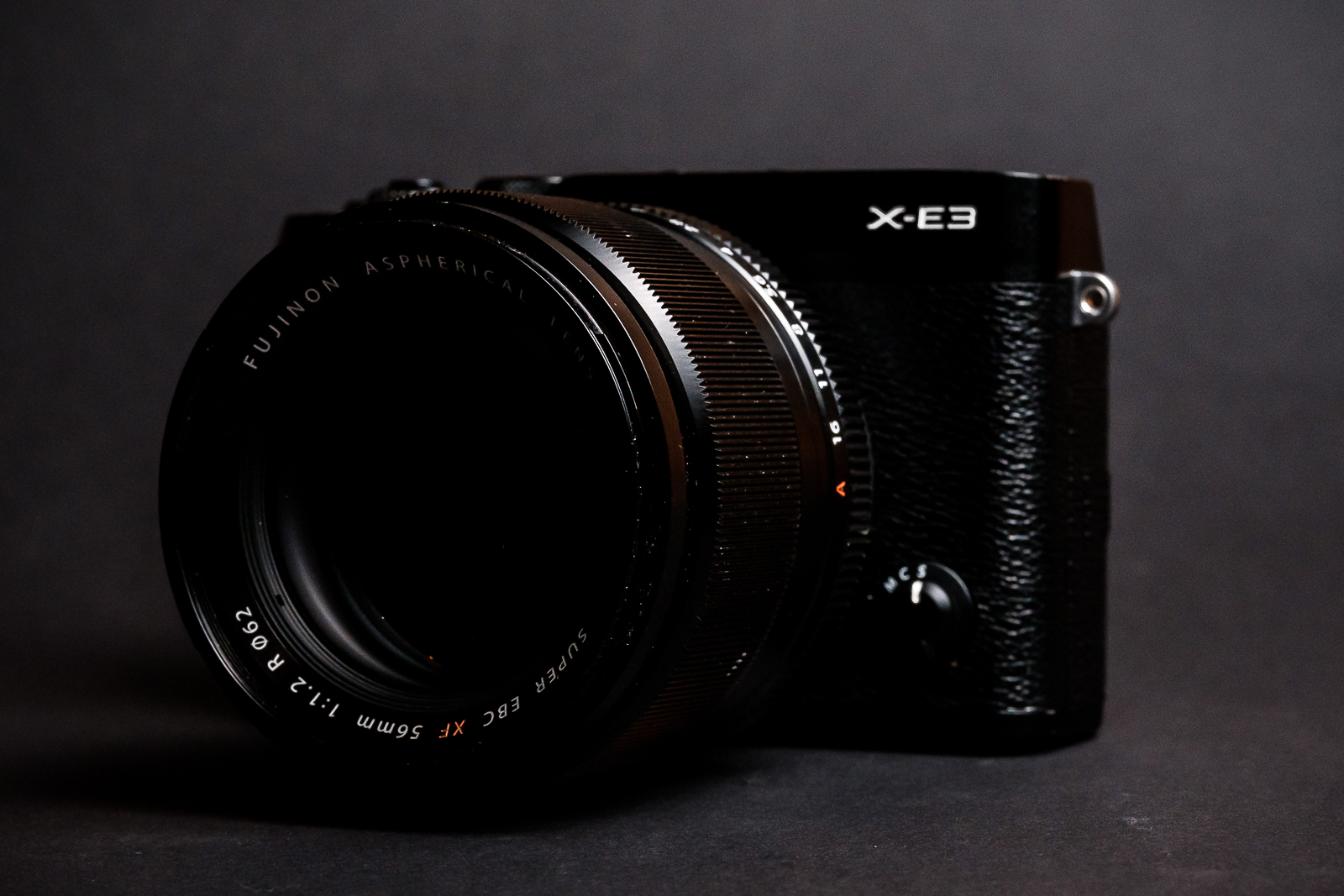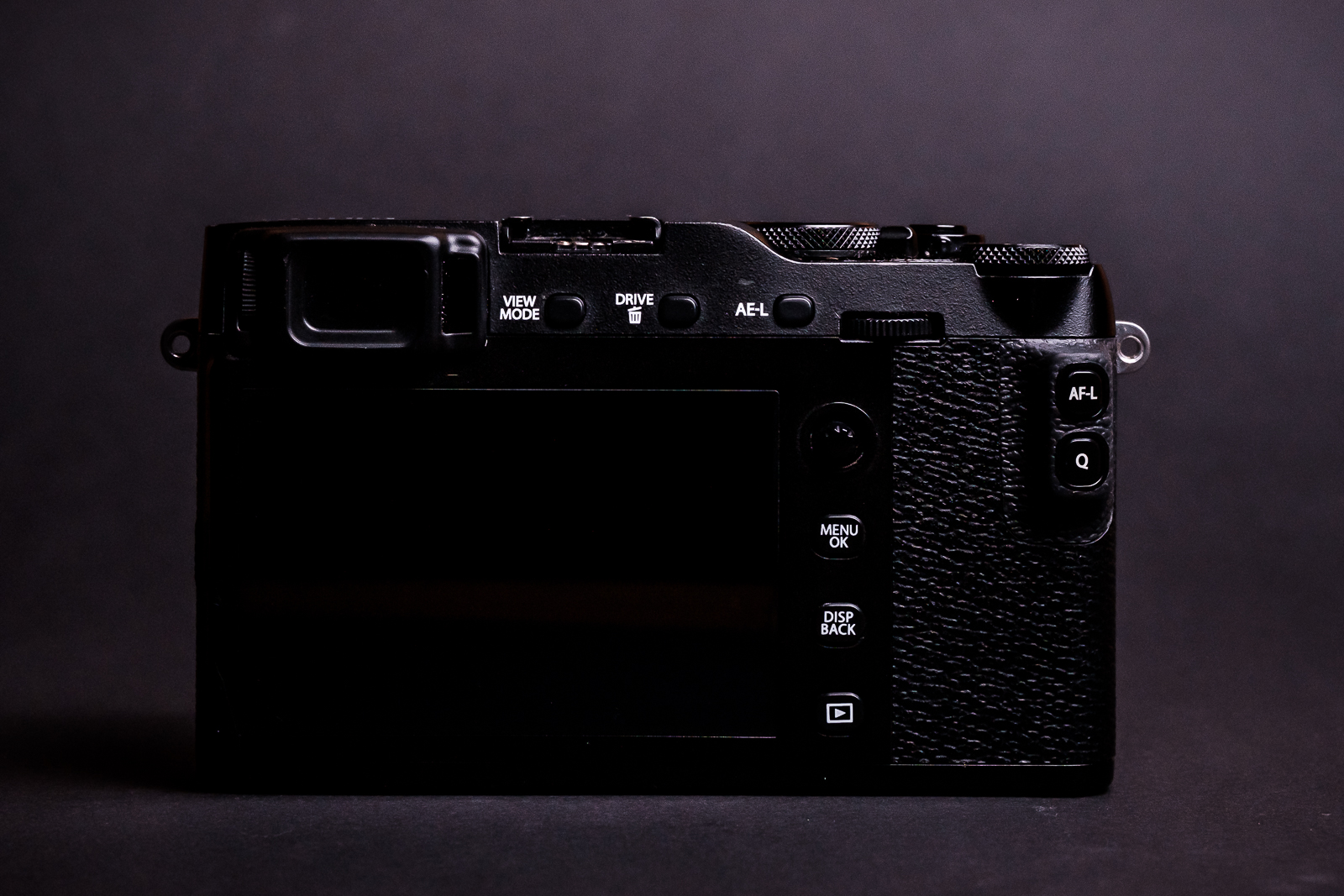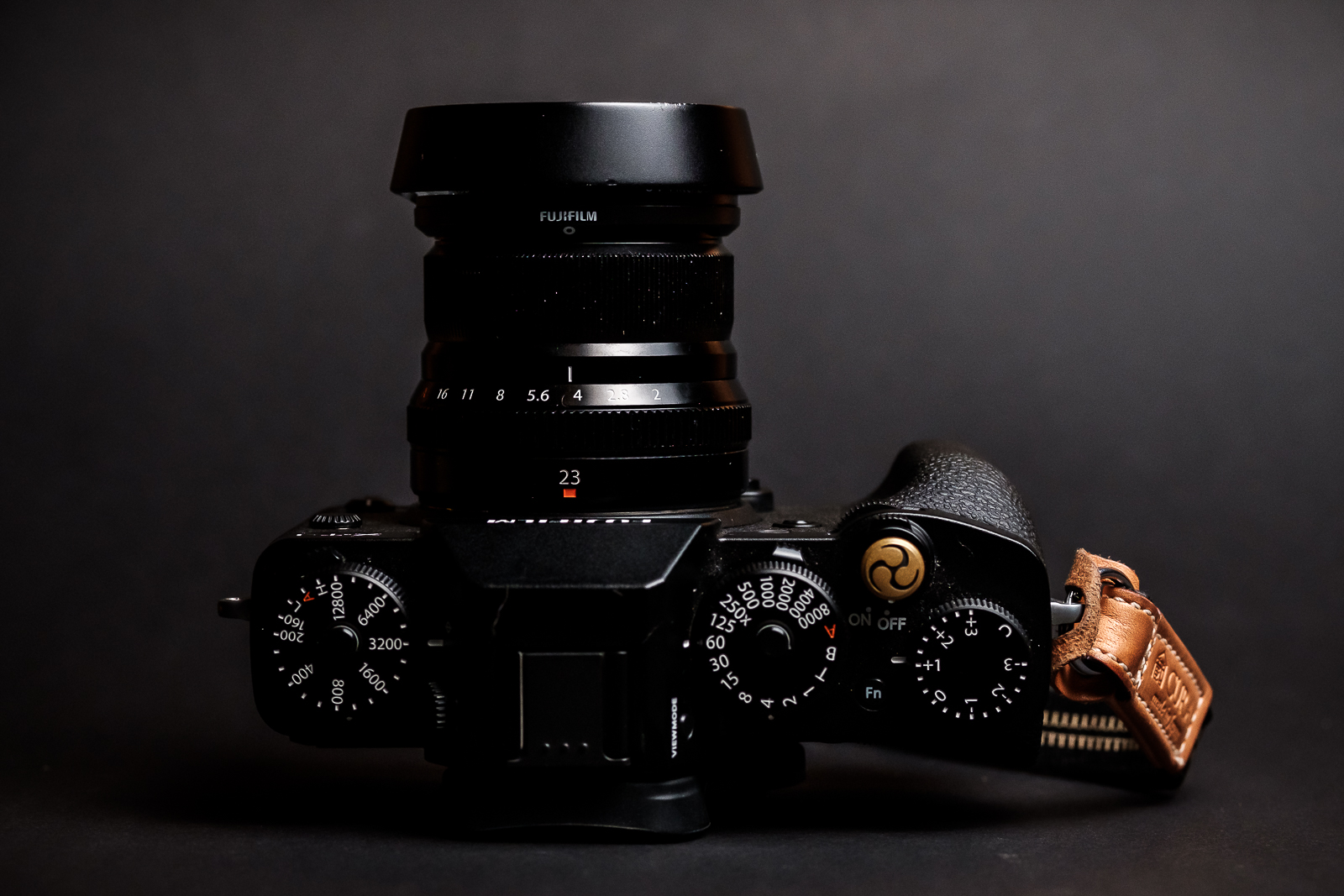I currently own the Fujifilm X-T3 and before that the Fujifilm X-T2 and before that the Fujifilm X-T1! I love this series of camera. I love the design and how I have full top dial access to ISO, Shutter Speed and Exposure Compensation. I shoot a lot of street with this camera, and as a result, I fully utilise the dual-direction tilting screen. I can shoot from the hip or lower. I also find that when paired with the Fujifilm “Fujicrons” it is a perfect balance, size and weight for me. The “Fujicrons” are the current set of smaller, and weather-sealed prime lenses in the Fujifilm XF16mmF2.8, XF23mmF2, XF35mmF2 and the XF50mmF2. They are much smaller and lighter than the older, faster primes of the equivalent focal distance. Of which I currently own the XF23mmF2 and the 50mmF2. Both perfect for my style of work – both professional and casual.


Why make such a comparison between the X-T3 and the X-E3 you may ask? A few reasons. Firstly, why not? Simple. Secondly, Fujifilm Australia was kind enough to send me an X-E3 for this blog. Third, I was never a big fan of the rangefinder-style that the X-Pro series offered. Based on my history with Fujifilm cameras, I preferred my EVF (Electronic View Finder) in the middle of the camera. Having an OVF (Optical View Finder) never phased me either. Also, I found that the X-T series was always a step ahead in technology and firmware compared to the X-Pro series. Let’s not forget the retro design of the camera. The X-Pro series felt a bit brick-like for me. Having the X-E3 allows me to go back and visit my prior assumptions. Plus, I have a feeling it may be an underrated entry in Fujifilm’s robust line of X System camera bodies. So let’s get into it.
Upon first inspection, I was surprised at both the small size and weight of the X-E3. Really surprised. I also own the Fujifilm X70 and to be honest, the X-E3 is not much bigger – millimetres only in each dimension. Also, to hold them both, I would say that the X-E3 may even be a little lighter. Then going back to my X-T3 I notice that it has a healthy and robust heft to it. Let’s take a look at the actual weights – with a battery the X-T3 comes in at 539 grams, the X70 is 340 grams, and the X-E3 is a tiny 337 grams. Keep in mind that the X70 has a built-in lens. I was surprised by this. The X-E3 is a solid build and does not feel like materials have been compromised. Weight was saved through not having the mechanics for a flip screen as the other two bodies have. Either as your only camera body or as a second body, you would not be physically hindered by having this in your kit bag.


I don’t want to go into too many specs in this review – you can source those via the Fujifilm site here. However, a comparison article wouldn’t be complete without talking about some of the critical numbers before I get into the shooting experience. The Fujifilm X-T3 has the latest and greatest 26.1-megapixel X-Trans CMOS 4 sensor. Processing power is provided again by a new X-Processor 4. The X-E3 is no slouch either! It sports a 24.3 megapixel X-TransTM CMOS III sensor and X-Processor Pro. This is only a generation behind the X-T3. Both cameras have primarily the same AF (Auto Focus) functions and features. However, dominance in AF goes to the X-T3 with an enhanced autofocus system with robust eye and face detect AF. For video, the X-T3 has been heralded as a winner. It shoots in full 4K/60P 4:2:0 10bit to an internal SD card and 4K/60P 4:2:2 10bit via HDMI output. The X-E3 can shoot 4K at 29.97P.
The heft and weight of the Fujifilm X-T3 allow for any of the Fujifilm X Series lenses to be attached and feel right at home. From the tiny Fujifilm XF16mmF2.8 through to the Fujifilm XF50-140mmF2.8 and beyond. The balance is excellent and reassuring in the hands. Moreover, still not too heavy for more extended periods of handheld shooting and carrying. I only use wrist straps on my cameras. Putting the Fujifilm XF23mmF2 – or any of the smaller “fujicron” lenses – on the Fujifilm X-E3 feels like a perfect match. Excellent balance for comfort when shooting and carrying for long periods. Carrying it in the street was effortless.


However, putting a larger prime on the X-E3 changes things considerably. I attached the Fujifilm XF56mmF1.2 to the X-E3 and instantly noticed just how front-heavy this pairing was. The smaller body and the smaller amount of purchase or grip area are apparent and quickly became uncomfortable for me. You rely on that left hand to support the weight of the lens rather than just control focus and aperture. Bigger lenses and zooms would amplify this feeling — only a minor negative. The camera is incredibly light and compact with great features. If I were to use the X-E3 long term, then I would only use the smaller primes on it.


There is an extraordinary amount of thumb real-estate on the back of the X-E3 partially thanks to the removal of the D-Pad and the decent thumb-bump on the rear. The front has a rubber grip area that protrudes from the body. My hands are big, and my little finger curls under the camera body. This could prove uncomfortable for me with long periods of use. Although I mostly shoot with both hands on the camera, so there is a balance. It does feel almost too small for me – which is odd given that I use the X70 so much and don’t notice the size being an issue. The overall layout of buttons and dials on the X-E3 seems well designed and ergonomically comfortable. The touch screen, like the X-T3, is responsive and can be set up to allow for ‘swipes’ in different directions to activate functions. For the X-E3, this is the replacement for the D-pad. At first, I found this a little frustrating but over time would get the hang of it.
On the X-T3, I use the ISO dial all the time. In a given setting, I read the lighting and the scene and dial in the ISO, SS and Aperture – I don’t use Auto for anything other than Focus. I like that full control. I noticed with the X-E3, I missed having that dedicated dial for ISO. Also, the lack of D-Pad meant having to swipe the screen to access the Auto ISO control. Then drag up or down on the screen for ISO. Fortunately I could program another button or dial for ISO. Not great but usable. This was another reason I couldn’t get into the X-Pro series. However, if you tend to set ISO to Auto, then this is not an issue.


The AF is on the X-T3 is super fast. Also important to know is just how big an improvement the face and eye detect has received since the latest firmware update. The better processor and sensor plays a big part in that also. Out on the street, I found that the Auto Focus on the X-E3 was snappy and responsive. I often have to shoot quickly when a subject and scene unite on the street, and the X-E3 did not let me down. It depends on what lens you have on your camera when testing out the AF. In this case, I was using the Fujifilm XF23mmF2. I am a big fan of this lens for its lighting quick AF. This combo was also very discreet given the camera almost disappears in both my hands.
Keep in mind that I am predominantly a street shooter, so my X70 is my compact every day carry. I do a moderate level of professional work, and in those cases, I have my Fujifilm X-T3. It is currently the best of the best of Fujifilm’s X-Series bodies. For the time being, nothing else in the range can compare to it. So I am not going to tell you how well the X-E3 outperforms the X-T3 in any way – other than size and weight. Not a fair comparison. Nor can I give you an indication of how well the X-E3 does perform in a wedding, portrait shoot or otherwise. This comparison article was to give a review of the X-E3 with the X-T3 as a point of reference.

Given the X-E3’s heritage and all the factors I have talked about in this blog, it is an incredibly competent and feature-packed camera. If a rangefinder-style of cameras is your thing and you don’t want to pay twice the price for an X-Pro series camera body, then this is the camera for you. You cannot go wrong. In much the same way that an X-T30 is an excellent camera if the cost of the X-T3 is out of range. As a first Fujifilm camera, or even as your second body for professional work, the Fujifilm X-E3 is a winning solution.


I would like to thank Fujifilm Australia for the loan Fujifilm X-E3 and the Fujifilm XF56F1.2. Fujifilm do not sponsor my work other than the loan gear they are able to provide me from time to time. All images were shot with the Fujifilm X-T3, X-E3, with the XF50mmF2. Also additional images were shot with the Fujifilm X70. The last poor quality image was shot with an iPhone. At some point, a guy runs out of cameras.

4 Responses to Fujifilm X-E3 Vs Fujifilm X-T3
[…] To continue reading this blog please click here! […]
LikeLiked by 1 person
Thank you for the comparison. I enjoyed reading the details.
LikeLiked by 1 person
Nice article. I until just recently owned the x70, x-t1 and x-e3. I “never” used the x-e3 for the 2 years I owned it (purchased 2nd hand). I would pick up my x70 or the x-t1. A week ago I purchased a like new X-t2 for USD $700. Why? just because. As a hobbyist, just as you summarized, the x-e3 could have provided me the functionality of the x-t3. But I liked the handling ergonomics of my x-t1 so wanted to try the x-t3. The weight of my x-t1+base plate is the same as the naked x-t3.
Also was intrigued by your comment that you felt the x-e3 was a bit too small, while OTOH you never thought as much with your x70. I kind of felt the same way, hence I always picked up my x70 over the x-e3 when I needed to go full mobile.
LikeLike
whoops. I meant I got a used x-t3 (not x-t2).
LikeLike